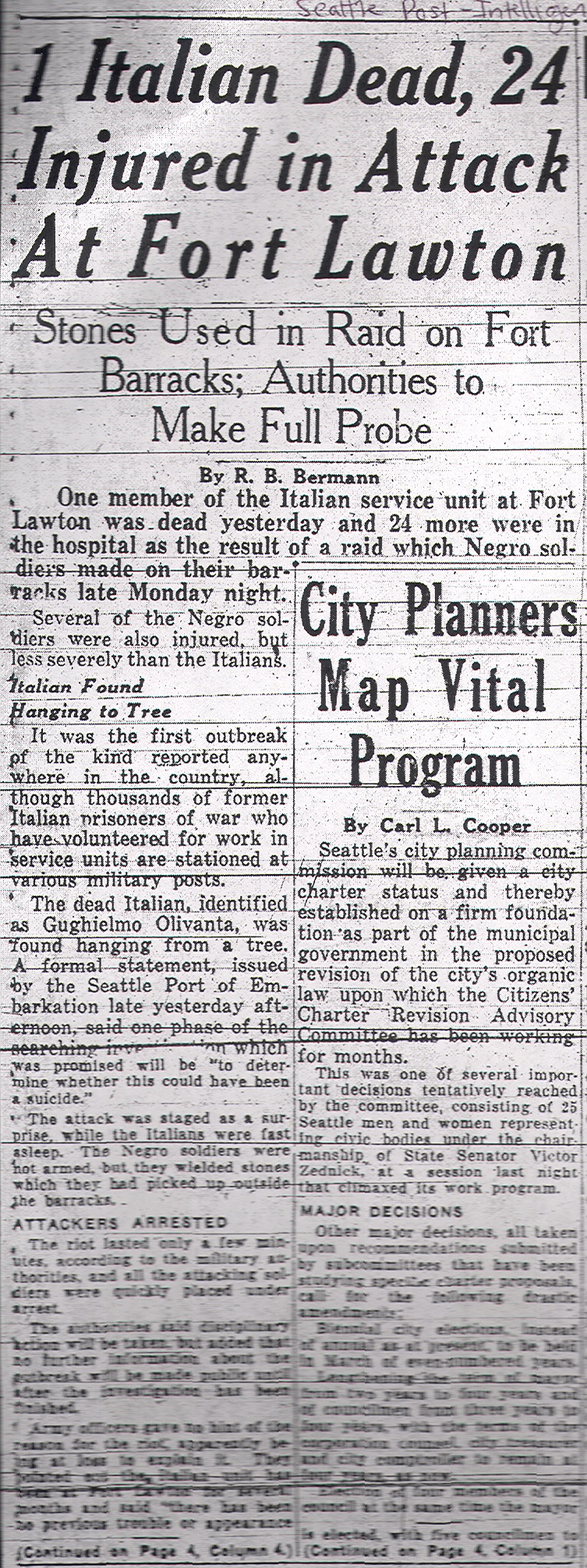On August 14, 1944, African American soldiers “rioted” against Italian prisoners of war (POW) at Seattle’s Fort Lawton, an Army staging area for combat in the Pacific. American officers and POW’s under their guard were severely beaten. The next morning, one of the POW’s, Guglielmo Olivotto, was discovered hanged a considerable distance away. Newspaper accounts attributed the riot to black soldiers’ resentment of the Army’s lenient treatment of Italian POW’s.
The Army classified its investigation, and the ensuing court martial resulted in the conviction of twenty-three African American soldiers, including one enlisted man, for manslaughter for killing Olivotto, based on no evidence. Sixty years later, the Army investigation was declassified.
Who lynched Olivotto cannot be proved, but the following are interesting facts. White military police (MP’s), moreso than black soldiers, routinely harassed the Italian POW’s and plainly tried to involve black soldiers. White MP’s failed to respond to frantic calls from the Italian barracks for a remarkable 30 to 45 minutes. No white MP could remember any particular black rioter, as “you can’t tell them apart.” The damage to the barracks was repaired and repainted within 24 hours, destroying all evidence. Army investigators later learned that many MP’s and officers at Fort Lawton lied under oath about the incident, sending a number of black enlisted men to various levels of military punishment.
Researcher Jack Hamann argued in his book, On American Soil, that justice was not served in the Fort Lawton courts martial. In October 2007, the Army’s Board of Corrections of Military Records overturned the convictions, allowing the cases to be reopened.


